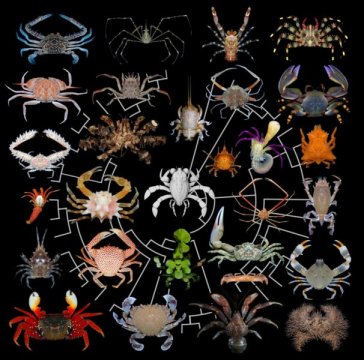[ad_1]
The crab family just got a bunch of new cousins — including a 95-million-year-old chimera species that will force scientists to rethink the definition of a crab.
An international team of researchers led by Yale paleontologist Javier Luque announced the discovery of hundreds of exceptionally well-preserved specimens from Colombia and the United States that date back to the mid-Cretaceous period of 90-95 million years ago. The cache includes hundreds of tiny comma shrimp fossils, several true shrimp, and an entirely new branch of the evolutionary tree for crabs.
The most intriguing discovery, according to the researchers, is Callichimaera perplexa, the earliest example of a swimming arthropod with paddle-like legs since the extinction of sea scorpions more than 250 million years ago. The name derives from a chimera, a mythological creature that has body features from more than one animal. Callichimaera’s full name translates into “perplexing beautiful chimera.”
Luque noted that Callichimaera‘s “unusual and cute” appearance, including its small size — about the size of a quarter — large compound eyes with no sockets, bent claws, leg-like mouth parts, exposed tail, and long body are features typical of pelagic crab larvae. This suggests that several of the larval traits seen in this “perplexing chimera” might have been retained and amplified in miniaturized adults via changes in the timing and rates of development. This is a process called “heterochrony,” which may lead to the evolution of novel body plans.
“Callichimaera perplexa is so unique and strange that it can be considered the platypus of the crab world,” said Luque. “It hints at how novel forms evolve and become so disparate through time. Usually we think of crabs as big animals with broad carapaces, strong claws, small eyes in long eyestalks, and a small tail tucked under the body. Well, Callichimaera defies all of these ‘crabby’ features and forces a re-think of our definition of what makes a crab a crab.”
A study about the discovery appears in the April 24 online edition of the journal Science Advances.
“It is very exciting that today we keep finding completely new branches in the tree of life from a distant past, especially from regions like the tropics, which despite being hotspots of diversity today, are places we know the least about in terms of their past diversity,” Luque said.
Story Source:
Materials provided by Yale University. Note: Content may be edited for style and length.
[ad_2]















